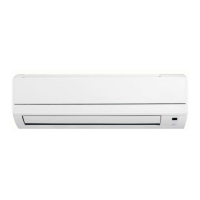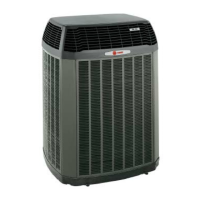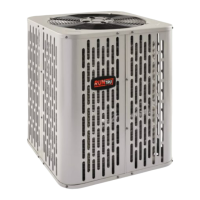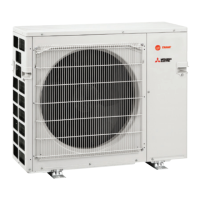GF - H 2
Indoor Blower Motor
Go/No - Go Test for Serial Port V.S. Blower Motor
Step 1
Remove power from the gas furnace or the air han-
dler.
Step 2
Unplug the serial port variable speed motor low volt-
age plug from the motor (Figure 3).
Variable Speed Indoor Blower Motor Operation
The Serial Port Communication type of variable speed
motor operates the same as the 24 volt controlled
V.S. type except the on/off control and speed signals
are now a digital command signal.
The motor module (Figure 1) receives the command
signal and replies back to the indoor product control
board. This type of motor module is not
preprogrammed at the factory. The horsepower,
operating speeds, maximum RPM and direction of
rotation information are stored in the Personality
Module, which is located on the Gas Furnace Control
(IFC) or an Air Handler Control (AHC).
Serial Port Communication
Single phase 120 or 240 volts AC power is applied to
the motor module and IS NOT turned on or off by the
IFC or AHC. The V.S. Motor module converts the AC
power to DC power. Some of the DC voltage is reduced
to power the microprocessor inside the V.S. Motor
module. A communication fault will appear if line
voltage is removed from the V.S. Motor module and
the IFC or AHC system is then repowered.
When blower operation is called for, the V.S. Motor
module turns the DC power on and off to each leg of
its three phase motor in a rotating manner. The V.S.
Motor Module will increase the voltage and number of
Hertz it applies to its three phase motor to increase
its speed, or decrease the voltage and Hertz to slow
it down.
The V.S. Motor module monitors the motor’s RPM
and power and compares this information to its
programmed information. If the RPM and power do
not align with the programmed information, the V.S.
Motor module will change its output voltage and Hertz
to bring the airflow back in line with its program.
Figure 2
Figure 1
When the system is powered up, the V.S. Motor
programming information stored in the Personality
Module is sent to the V. S. Motor module. The Serial
Port Communication V.S. Motor has four low voltage
wires plugged into it (Figure 2). The four wires are; (1)
The TX wire which is used to send all digital information,
(2) The RX wire which is used to receive all digital
information, (3) 24 Volt AC and DC common wire, and
(4) 12 Volt DC wire. The 12 volts are supplied by the
IFC or AHC control and used to power the input and
output circuits, optic-couplers, in the V.S. Motor.
Motor
Module
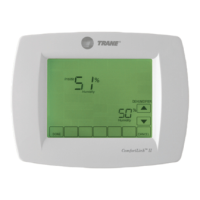
